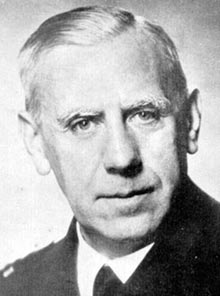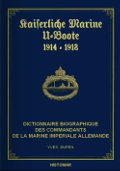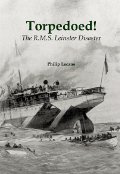Robert Ramm
Oberleutnant zur See (Crew 4/10)
| Successes 1 ship sunk with a total of 2,646 GRT 1 ship damaged with a total of 4,095 GRT 3 ships taken as prize with a total of 3,530 GRT |
| Born: | 3 Dec 1890 | Klein-Daberkow, Mecklenburg |
| Died: | 19 Oct 1918 | North Sea |
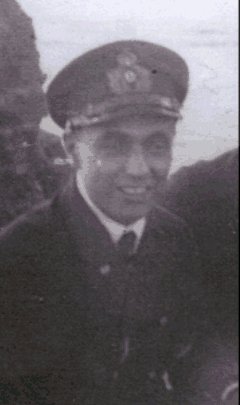 Photo courtesy of Deutsches U-Boot Museum | Ranks
Decorations
|
U-boat Commands
| UB 123 | 6 Apr 1918 | - | 19 Oct 1918 (+) |
Notes
Robert Heinrich Ramm was born on 3 December 1890 in the village of Klein-Daberkow, Mecklenburg, in the northeast of Germany. Mecklenburg adjoins the Baltic Sea, has a mild climate and is a farming region. It is mostly flat, with some low hills and is dotted with many small lakes. Ramm was the son of a large tenant farmer on land owned by the GrandDuke of Mecklenburg. He was educated at the Schiller-Realgymnasium (secondary school) in Stettin, about 70 Kilometres (43.5miles) east of his village. He left school in Easter 1910 after obtaining his Abitur (final examination certificate) and having applied to become an officer cadet in the German navy. The navy was a comparatively recent development of the German state. The army was the senior service and its officer corps was dominated by the nobility and the sons of higher civil servants. The navy recruited its officers from among the middle class, who were eager to have their sons wear the Emperor’s uniform. Ramm’s education qualified him for entry as a naval officer cadet. But the final decision as to whether he would be accepted rested with the Sea Cadet Entrance Commission. This body met in private, did not keep minutes and were not required to reveal the reasons for their decisions. Their judgements were made on the basis of the social and financial status of an applicant’s family. The Commission received information from schools, police, magistrates and district military commanders. Income was an important factor in the decision. In 1910 the average yearly industrial wage was approximately 1,300 Marks. The parents of naval cadets were required to pay 1,505 Marks for their first year’s training and 1,000 Marks per year for the following three years. For the succeeding four years they were expected to pay 600 Marks per year in order to allow their son, at junior lieutenant rank, to maintain the lifestyle of an officer. The Ramm family obviously met the social and financial requirements.
On 1 April 1910 Robert Ramm was one of 207 young men who reported to Kiel as Sea Cadets. The German Navy has a tradition of referring to cadet intakes by the year in which they join. Thus Ramm was a member of Crew1910. Almost half of the cadets of Crew 1910 were the sons of senior academics, 26 were from the lower nobility, 37 had a merchant or industrial background and 32 came from other middle-class backgrounds. Among the intake of Crew 1910 were Karl Dönitz, commander of Germany’s U-boat service during World War Two and Hans Joachim Emsmann. Ramm became particularly friendly with Emsmann, who was the son of an admiral. After six weeks of physical training and infantry drill Ramm was assigned to the training ship S.M.S. Hansa. Here on a long sea voyage he learned basic sailing skills, together with grounding in gunnery, navigation and engine-room practice. The engine room training included three weeks stoking the boilers. Sea Cadets had to learn in just over ten months what Royal Naval officers, who entered the service at thirteen, were trained over a period of five years. The end of Hansa’s voyage was followed by a period of leave and promotion to the rank of Fähnrich zur See (midshipman). This was followed by a year at the naval school at Flensburg-Mürwik, near the Danish border. The training was mostly theoretical, covering navigation and seamanship, naval regulations, maths, engineering, hydraulics, shipbuilding, ship recognition, gunnery, and mining. There was an hour per week of English and French. The men were also taught fencing, horse riding and dancing. Drinking, smoking and playing of music were prohibited within the grounds of the school. Outside the grounds drinking was only permitted at inns used by the officer corps. At concerts and the theatre the midshipmen had particular seats reserved for them. In the early summer of 1912 the men were sent on specialized courses in gunnery, torpedoes and infantry exercises. For the final year of their training midshipmen served aboard seagoing ships of the fleet. Ramm was posted to the battleship S.M.S. Hessen. On 1 October 1913 he completed the required three and a half years as a cadet. He now faced his final test. The German navy had a custom whereby the officers of their ship elected cadets to officer status. Election had to be unanimous and there was no appeal. The custom “was designed as the final bar to any dilution of the social and spiritual homogeneity of the officer corps.” Following his election to officer status Ramm would have sworn the following oath on the Imperial flag or on an officers drawn sword: “I, Robert Ramm, swear a personal oath to God the Almighty and Allknowing that I will loyally and honourably serve His Majesty the German Kaiser, Wilhelm 11, my supreme war lord, in all and any circumstances on land and sea, in peace and in war and will act in a correct and suitable manner for a righteous, brave, honourable and dutyloving soldier.
Ramm was appointed to the post of radio officer on the S.M.S. Hessen, with the rank of Leutnant zur See (sub-lieutenant). On 28 June 1914 heir to the Austrian throne Archduke Franz Ferdinand, and his wife Sophie were assassinated during a visit to the Bosnian capital Sarajevo. The event triggered off a series of reactions by the major European powers that led to the outbreak of World War 1. Ramm’s post as radio officer would have given him access to some of the naval signals transmitted during the mounting crisis. He was serving on the Hessen on the outbreak of war. He had fallen in love with Gerda, the sister of his friend Hans Joachim Emsmann. Like all officers intending to marry, he had to apply for permission to the Kaiser’s personal office. Royal consent was given. The official records say “He was one of the first of the crew (i.e. Crew 1910) to start a family by marrying the sister of his friend Emsmann.” Robert Ramm and Gerda Emsmann were married on 10 November 1915. Ramm’s classmate Karl Dönitz married a general’s daughter. Ramm married an admiral’s daughter. While the upper ranks of the army were dominated by the nobility and had a higher social status than the navy, it might be worthwhile looking at the living arrangements of the Dönitz family to get some general idea of the conditions in which the Ramm family may lived. Peter Padfield, Dönitz’s biographer, said that the family had “a moderately large house near the harbour at Kiel, it had a master bedroom, two children’s and a maid’s rooms, a dining and a drawing room.” Padfield goes on to say that “Ingeborg’s marriage settlement must have helped: probably it formed a substantial part of their joint capital whose interest allowed them to live in a style befitting a general’s daughter.” Presumably the Ramms were living in the slightly lesser style befitting an admiral’s daughter.
Apart from a few forays by a small number of ships, the German navy had been confined to port by the stronger Royal Navy since the outbreak of war. The focus of the German navy had concentrated on developing its Uboat arm. Suitable officers were required for the Uboats. Some of them volunteered. Others, like Karl Dönitz, appear to have been assigned to the U-boat service. Whether Robert Ramm volunteered or was assigned, he started at Uboat school in February 1916. The official report of his career to date says “Ramm was good at both theory and practice. He had a great interest in all types of sport. He socialised very well. While serving as Fähnrich on S.M.S. Hessen, he was commended for the high level of training achieved by the crew of the light guns he commanded. He found it easy to inspire enthusiasm in his men.” In April 1916 he was appointed watch officer on U-76, a minelaying submarine.
U-76 was put into commission on 11 May 1916, with Kapitänleutnant Waldemar Bender as commander and Leutnant zur See Robert Ramm as one of the boat’s senior officers. The submarine had a total crew of 32. On 30 July it laid a minefield off Longstone on the east coast of England. In an attempt to block the shipment of war materials to Russia, the mine laying submarines U-75 [Kptlt. Curt Beitzen] and U-76 were sent to operate off the Kola peninsula, on the north-west coast of Russia. Robert Ramm was aboard U-76 off the Kola Peninsula on 1 October 1916, when his wife Gerda gave birth to their first child, Robert junior. Over the next two days U-76 laid minefields off the entrance to the White Sea. Between them U-75 and U-76 laid a total of 72 mines. The mines resulted in the sinking of four ships, including the neutral Norwegian steamer Botnia. At the end of the mission, presumably, Ramm was able to meet his newly born son, whom the official records say was nicknamed ‘Seemann’ (i.e. Sailor).
Heligoland is a 2.1 sq km (one square mile) island in the North Sea, 70 kilometres (43.5 miles) off the coast of Germany. It was a German naval base during the First World War. On 9 January 1917 U-76 left Heligoland, to again lay mines on the northwest Russian coast. The boat arrived at its destination on 21 January. Kapitänleutnant Bender planned to enter Alexandrowsk harbour, sink the freighters there and lay mines in the vicinity. During the night of 21-22 January a ship travelling without lights accidentally rammed U-76. According to Kapitänleutnant Bender, due to falling snow, the submarine’s crew did not see the approaching steamer until she was close to them. U-76 started to dive but was struck just behind the conning tower. Water started to flood the engine room. The submarine surfaced. The steamer sailed on, apparently unaware that she had rammed a U-boat. Unable to dive, U-76 set out on the long trip home. Six days later, in stormy weather, U-76 was near Söröy Island, off the north coast of Norway. The boat had developed engine problems that the crew were unable to repair and the boat’s batteries were almost flat. U-76 was in danger of being swept onto the rocks at Söröy Island. It was decided to find a sheltered cove, land the crew and scuttle the submarine. The crew spotted the Norwegian fishing vessel Alia and fired a distress flare. They also hoisted the international signal for vessel in distress. The Alia took off Leutnant zur See Robert Ramm and most of the crew. Kapitänleutnant Waldamar Bender, Chief Engineer Fritz Herman and a mechanic stayed on board the submarine to scuttle her. The three men jumped overboard when U-76 started to sink. Chief Engineer Fritz Herman was lost in the stormy sea. The Alia took U-76’s crew to Hammerfest, Norway. There they were confined in a local hall. Bender sent a telegram to the German ambassador asking that he arrange for their release as shipwrecked sailors. As Norway was neutral, Robert Ramm and his crewmates should have been interned. However, Bender gave the captain of the Alia a thousand Kroner and five hundred Kroner to each of his crew for the rescue and to keep quiet about the circumstances under which it had taken place. In return, the captain of the Alia said that the submarine had not been scuttled, but had sunk because of damage. He also said the U-boat crew had been outside Norwegian territorial waters when they were rescued. The Norwegians therefore released them as ship wrecked sailors. They were returned to Germany by way of Sweden on 27 January 1917. Robert Ramm's first combat mission on a U-boat had certainly been eventful.
Official records show that Ramm was assigned to No. 1 U-boat Flotilla in February 1917. It is not clear what his duties were upon his return, as he wasn't assigned to a particular U-boat. Perhaps he was marking time until a place became available in another U-boat. In April he was sent on an officers torpedo course. These courses lasted four to eight weeks and were held at the naval school in Flensburg-Mürwik. In June he was assigned as a watch officer to U-49. The submarine was commanded by Kapitänleutnant Richard Hartmann and had a total crew of 36. On 27 June 1917 U-49 left the port of Emden, an operational area 350 miles west of Ireland. On 1 July, southeast of the Shetlands, the submarine met a convoy of five or six steamers. U-49 torpedoed the Norwegian steamer Stalheim (1,469 tons). The ship did not sink and was later towed to harbour. Two days later the submarine sank four ships west of the Shetlands. The ships were the Danish sailing ship Cimbria (234 tons), the Danish fishing vessel Mary Boyes (100 tons) and the Dutch fishing vessels Proefneming 1 (112 tons) and Thor (105 tons). On 8 July, west of Ireland, the submarine torpedoed the British merchant ship Obasi (4,416 tons). The ship did not sink. U-49 surfaced and sailors went on board with explosives. The Obasi’s captain and one of the ship’s gun crew were taken prisoner.
On 10 July U-49 torpedoed the British merchant ship King David (3680 tons). As with the Osabi, the ship did not sink. The submarine surfaced and, after the crew had taken to the lifeboats, the ship was sunk with U-49’s deck gun. The King David had been sailing from Brest, France to Archangel, Russia with a cargo of munitions and aeroplanes. The following day the submarine fired a torpedo at the British merchant ship Muirfield (3,086 tons). The torpedo missed. U-49 surfaced and opened fire with her deck gun. The ship fired back with her gun. The duel continued for two hours, when U-49 had to break off due to high waves. The submarine followed the ship and torpedoed her shortly after midnight. The crew took to the lifeboats and the ship sank. The ship’s first officer and radio operator were taken prisoner.
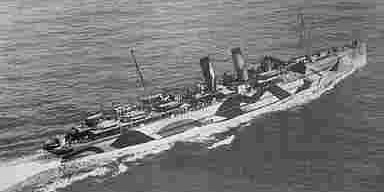
R.M.S. Leinster, sunk by UB-123 on 10 Oct 1918.
On 15 July U-49 surfaced and sank the British sailing ship Dunhope (2,086 tons) with its deck gun. The following day the submarine fired a torpedo at the British merchant ship Saturnia (8,611 tons). The torpedo missed. U-49 surfaced and opened fire with her deck gun. The arrival of a British destroyer forced the submarine to dive. Later that day U-49 met up with U-58. The two submarines made a surface attack on the Italian merchant ship Lamia L. (2,220 tons). The ship surrendered and the crew took to the lifeboats. U-49 then sank the ship with her deck gun. On 23 July 1917, having returned north of the Shetlands, U-49 docked at Wilhelmshaven.
In August 1917 Robert Ramm was assigned as Watch Officer to U-43, under the command of his old captain from U-76, Kapitänleutnant Waldemar Bender. On 8 September 1917 U-43 left Heligoland. She sailed by way of the Shetlands and west of Ireland. (On 11 September U-49, Ramm’s previous boat, still captained by Kapitänleutnant Richard Hartmann, was rammed and sunk by the SS British Transport west of the Bay of Biscay. All on board were lost). On 18 September, southwest of Ireland U-43 sank the Q-ship Winona (Glenfoyle / Stonecrop) with two torpedoes. After twelve days without encountering further targets the submarine set out on her return journey. Having sailed north of Denmark, into the Baltic, and through the Kiel Canal, she docked at Wilhelmshaven on 7 October 1917. She probably took this route to avoid minefields regularly laid by the British on the north German coast. When the boat docked, Robert Ramm was six days overdue for his son's first birthday. On 11 December 1917, after almost two months in port, U-43 left Heligoland again under the command of Kapitänleutnant Waldemar Bender and with Robert Ramm as one of the boat’s senior officers. Again sailing north of the Shetlands she set out for an operational area northwest of Spain. Christmas 1917 was spent at sea. On 28 December, 180 nautical miles west of Cape Finisterre, U-43 torpedoed and sank the French merchant ship Magella (6,265 tons). On 16 January 1918 the submarine docked at Wilhelmshaven, having again returned by way of the Baltic and the Kiel Canal. The boat spent from mid-January to mid April in dock undergoing repairs. A new captain, Kapitänleutnant Johannes Kirchner, took over command. But by then Robert Ramm had been given his own command. It was UB-123, the submarine that would sink the R.M.S. Leinster.
Friday 18 October 1918, 25 miles north north-east of Muckle Flugga, Orkney Islands, Scotland.
At 9.10 a.m. UB-125, outbound from Germany under the command of Oberleutnant zur See Werner Vater, picked up a radio message asking for advice on the best way to get through the Northern Barrage minefield. The sender was Robert Ramm on board UB-123. Extra mines had been added to the minefield every day since UB-123 had made her outward journey. As UB-125 had just come through the minefield, Vater radioed a suggested route. UB-123 acknowledged the message. This was the final contact made with UB-123. Later that day ships of the U.S. navy reported an explosion in the Northern Barrage minefield. The Royal Navy reported an explosion the following day. There is no way of determining which explosion sank the UB-123, but it is almost certain that one of them did. Following the explosion water would have poured into the submarine dragging her to the bottom of the North Sea. In an instant UB-123 would have changed from being a weapon of war to a steel coffin. The crewmen who would have been killed in the initial explosion were the luckiest. The rest would have died one the worst kinds of death imaginable. Robert Ramm’s wife and two children never saw him again. Thirty-five other German families were also berieved.
Text written by Mr. Philip Lecane, taken from his book Torpedoed!
Ships hit by Robert Ramm
| Date | U-boat | Name of ship | Type of ship | Tons | Nat. | ||
|---|---|---|---|---|---|---|---|
| 16 Jul 1918 | UB 123 | Anine (p.) | Steamer | 1,299 | da | ||
| 16 Jul 1918 | UB 123 | Constantin (p.) | Steamer | 831 | da | ||
| 16 Jul 1918 | UB 123 | Hjortholm (p.) | Steamer | 1,400 | da | ||
| 10 Oct 1918 | UB 123 | Leinster | Passenger steamer | 2,646 | br | ||
| 16 Oct 1918 | UB 123 | Caloria (d.) | Tanker | 4,095 | am | ||
| 10,271 | |||||||
| 4 ships sunk (6,176 tons) and 1 ship damaged (4,095 tons).
| |||||||
Media links
|
|
|
As an Amazon Associate uboat.net earns a commission from qualifying purchases.
